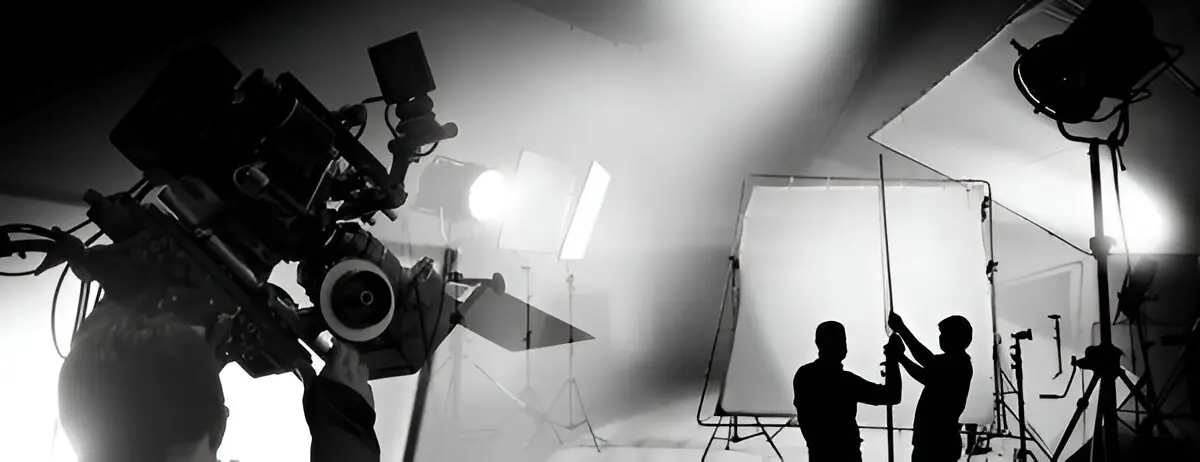Introduction India’s Media & Entertainment (M&E) industry is projected to reach ₹2.68 trillion (approximately US$31.6 billion) by 2025, representing an annual growth rate of 7.2%. This expansion is predominantly driven by the rapid adoption of digital media, which has emerged as the largest segment within the industry, reflecting an increasing demand for skilled professionals in digital content production and distribution. The Jindal School of Journalism and Communication (JSJC) has emerged as a significant academic centre for aspiring media professionals, offering structured programmes, experiential learning, and research-focused study. Students at JSJC explore both traditional and digital communication strategies while developing analytical, creative, and ethical skills. How is the Academic Curriculum at a Mass Communication College in India Structured? All the programmes at a mass communication college in India are designed to blend theory and practice. Undergraduate and postgraduate students engage in courses covering journalism, media studies, communication theory, advertising, public relations, and digital media production. The curriculum emphasises research-based learning, critical analysis, and storytelling across multiple platforms. For instance, students at the best mass communication college in India explore modules such as: News Reporting and Editing – emphasising fact-checking, ethics, and investigative techniques. Digital Media Strategies – covering social media analytics, content creation, and multimedia production. Media Law and Ethics – enabling understanding of Indian media regulations, defamation law, and digital rights. Development and Environmental Communication – integrating communication with social change initiatives. Media colleges such as Jindal School of Journalism and Communication also introduces cross-disciplinary electives from sociology, political science, …
Categories
Introduction The profession of journalism has never been static. From the era of handwritten pamphlets to the age of live-streamed updates, its form has always evolved to match the tools and challenges of the time. Yet in a technological era, a single fabricated image can travel across continents in seconds; a deepfake video can discredit a public figure overnight; an algorithm can subtly reshape what millions of people believe is true. For students choosing a journalism course today, this reality is both daunting and deeply motivating. The task is no longer only to find and report the truth but to protect it from distortion and rebuild trust in an era where scepticism is high. Modern journalism courses in India, informed by both data and experience, are equipping students to meet these contemporary challenges. A Public Hungry for Truth but Wary of News The demand for trustworthy journalism is stronger than ever, yet public confidence remains fragile. According to the Pew Research Center, 59 % of adults across 35 countries say “made-up news and information” is a significant problem in their country. This is not a marginal issue; it reflects a global climate in which credibility is under constant pressure. Compounding this challenge is the fact that many people are actively stepping away from the news. The Reuters Institute Digital News Report 2024 found that 39 % of respondents now sometimes or often avoid the news. The reasons range from fatigue to frustration, but the outcome is the same, that is, …
In an era of rapid digital transformation and hyper-connectivity, corporate communication has emerged as a critical component of modern business strategy. Whether it's managing a company's reputation, engaging stakeholders, or dealing with crises, effective communication may influence an organisation's trajectory. India's corporate communication landscape indicates its growing relevance. The Indian public relations sector grew to INR 2,500 crore in FY23 and is expected to nearly double by FY30, driven by increased digital and influencer outreach. Meanwhile, the unified communications market in India was valued at USD 4.9 billion in 2024 and is predicted to rise at a startling CAGR of 15.11% to USD 18.1 billion by 2033. These figures demonstrate the growing demand for professionals qualified to create compelling messaging in a complicated business environment. What is corporate communication? The strategic planning, implementation, and administration of communication between a business and its stakeholders—including its staff, investors, media, clients, and the general public—is known as corporate communication. It includes investor relations, crisis management, digital and social media strategy, and internal and external communication. A strong public image, trust, and consistent messaging are all facilitated by effective business communication. Why Corporate Communication Matters Over 45% of corporate communication professionals make between INR 22.5 lakh and INR 62.5 lakh a year, according to the India Communicators Group (ICG), demonstrating the lucrative potential of this industry. Competitive entry-level positions pay between INR 5.3 lakh and INR 5.8 lakh annually for new hires. With an average annual increase of INR 2.3 lakh, salaries are increasing …
The importance of journalism and mass communication is undeniable in a democratic society. From the distribution of news and information to the exploration of other mass media such as film, television and the internet, this discipline spans a vast area of culture and society. Many students opt for journalism courses after 12th to access the diverse career opportunities it offers. Journalism is a time-honoured profession that continues to adapt to changing media landscapes. Despite the evolution of mass media, its basic purpose, to distribute different types of information, news, and entertainment to the general public remains unchanged. What is the Difference Between Journalism & Mass Communication? Human beings’ hunger for knowledge and information is the main force driving profession like journalism to flourish even in the 21st century. Journalists are often praised for their fearlessness, on-ground reporting of real-world events with objectivity, and their courage to seek and speak the truth. On the other hand, Mass Communication is the means through which the media establishes communication with the public and distributes its content. Journalists use various mass mediums, such as newspapers, radio, television, and the Internet, to reach their audiences. Here are the particular differences between Journalism and Mass Communication to help you explore the journalism courses after the 12th. Journalism Mass Communication 1. Journalism is all about collecting, verifying, and circulating information and news content to the public at large. Mass Communication deals with various types of media, their different usages and their impact on society. 2. The primary …
Eager to know about brand storytelling, media strategy, and the power of words? A corporate communication course can be the best choice for you. In the fast-paced corporate world, the ability to communicate comprehensively has become very important. Corporate communication professionals play a vital role in shaping organisational success. In this article, we will talk about the importance of corporate communication, its scope it and why now is the perfect time to explore corporate communication courses in India. What is Corporate Communication? Corporate communication is a strategic function within an organisation, focused on managing the internal and external communication in order to create a favourable point of view among the stakeholders. It balances the gap between an organisation and its employees, investors, customers, media, and the public. Corporate communication today seamlessly integrates public relations, media engagement, branding, crisis management, investor relations, and digital storytelling—all under one umbrella. In an era where a single tweet can shape or shatter reputations, skilled corporate communicators are more valuable than ever. From crafting press releases and executive speeches to shaping social media narratives, these professionals are at the core of building and safeguarding an organization’s image. Scope of Corporate Communication The career possibilities in corporate communication are vast and continually evolving with new media and technologies. As businesses grow more transparent and socially engaged, the need for clear, strategic communication is more critical than ever. Here is what you can explore after completing corporate communication courses: Build positive brand images and maintain strong collaborations …
Table of Contents Journalism and media studies are exciting fields that offer a wide range of career opportunities for those passionate about storytelling, communication, and current events. In this guide, we will explore career in journalism and mass media, journalism career salary in India, and how to build a successful career in journalism and communication.What is Journalism and Media Studies?Journalism and media studies refer to the study of gathering, assessing, and presenting news and information to a wide range of audiences through various media channels. It encompasses various aspects of mass communication, including print, broadcast, and digital media. The field involves developing skills in research, writing, editing, photography, videography, and multimedia production to create engaging content that informs and entertains the public.Types of Roles and Jobs in JournalismPursuing a career in journalism and mass communication in India offers a variety of career options, including traditional reporting, digital media, public relations, and more. A career in journalism is dynamic and evolving, with the digital landscape offering new opportunities. Journalism is considered a good career in India due to its influential role in society and democracy. The journalism career salary in India can be quite rewarding, with the potential for growth as one gains experience. For those interested in specialized fields, a career in journalism and mass communication in India provides a platform to explore niches like sports journalism, which is gaining prominence due to the country’s focus on sports development and research.There are several roles and career options in journalism and …
Table of Contents From the outset, the film and television industry may seem all-glamorous, yet the ones working in the process, in front of the camera and behind the scenes, know very well how much hard work is required to put together a project and present it to an audience. Through its comprehensive film making courses, the Jindal School of Journalism and Communication prepares its students to meet the requirements of the industry today, while also introducing them to the pioneers in the field and encouraging them to draw inspiration from their work.The process of filmmaking demands a team of dedicated members, all playing their part in coordination. Apart from the prominent figures like the actors, directors and producers, a film crew consists of other smaller players like set designers, cameramen, video editors and so on. The same process applies to television programs. The study of film, television, and media develops various skills that open up a range of opportunities.A Brief History Of Film & TelevisionSince the invention of the film camera in the late 1800s, filmmaking has been a powerful tool for sharing stories, conveying social messages, and captivating audiences. Television emerged in the late 1920s, and the BBC made the first public broadcast in August 1936. However, the internet, a new medium in this digital age, has redefined the process of filmmaking and distribution.The films made in the early 1900s were all silent movies shot on black and white film. During the monochrome era of silent cinema, spanning …
Journalism is a professional approach to facts and information that is not easily available to the public. It emphasizes accuracy, integrity, and the use of credible sources, avoiding exaggeration or distortion. The primary goal of a journalism course is to instill a strong sense of responsibility and accountability in students, preparing them for a principled and impactful career in the media. Over the years, the power and popularity of mass media have created an influx of various content, while journalism has taken a backseat. Nonetheless, the very essence of journalism never fully dissipates for those willing to fight for the truth. The Evolution Of Journalism & Mass Media: A Historical Perspective The first traces of journalism come from the ancient city of Rome, around 59 B.C., where the first news sheet was circulated or hung in prominent places across the city, documenting everyday events. Since then, there have been many historical instances in China, Germany, and other places where circulars or notices were written to inform the public. News circulation through printing presses began in the 1600s, and the first recorded daily newspaper was the Daily Courant, published in 1702. From there on, journalism and news publication have only increased dramatically, and with the advent of the digital mediums in the 21st century, the idea, purpose, and consumption of media content have also evolved. In India, the first record of a newspaper is The Bengal Gazette by James Augustus Hickey in the year 1780. A journalism course in 2025 incorporates …
Journalism is often regarded as a prestigious profession, popularly known as the fourth pillar of democracy, the other three being the Legislature, the Executive, and the Judiciary. A career in Journalism or Mass Media begins with admission to a journalism course after 12th examinations. This courageous profession demands dedicated individuals who have an interest in the media and the way it works. The undergraduate course in Journalism & Mass Communication delves into the vast world of mass media. Students are taught about the various types of mass media, their history, and the current state of the industry. Since the digitalisation movement, the power of media has catapulted to its peak. A Journalism & Mass Communication degree opens up a flurry of opportunities for aspiring students and also familiarises them with the workings of the media in this digital age. The Power & Impact of Mass Media in a Digital World The concept and expression of journalism and mass communication have undergone drastic changes since the advent of the Internet. The digital world and new media are two factors that have significantly altered the public consumption of media, whether it be information or entertainment. Digital platforms have greatly changed how the media performs, especially the news media. Digitalisation has provided mass media with the power to use sensationalised content and set up narratives, rather than relying solely on basic facts for garnering views. All the negativities aside, new media have also empowered genuine content creators to present their work and reach …
In an era of rapid digital transformation and hyper-connectivity, corporate communication has emerged as a critical component of modern business strategy. Whether it's managing a company's reputation, engaging stakeholders, or dealing with crises, effective communication may influence an organisation's trajectory. India's corporate communication landscape indicates its growing relevance. The Indian public relations sector grew to INR 2,500 crore in FY23 and is expected to nearly double by FY30, driven by increased digital and influencer outreach. Meanwhile, the unified communications market in India was valued at USD 4.9 billion in 2024 and is predicted to rise at a startling CAGR of 15.11% to USD 18.1 billion by 2033. These figures demonstrate the growing demand for professionals qualified to create compelling messaging in a complicated business environment. What is corporate communication? The strategic planning, implementation, and administration of communication between a business and its stakeholders—including its staff, investors, media, clients, and the general public—is known as corporate communication. It includes investor relations, crisis management, digital and social media strategy, and internal and external communication. A strong public image, trust, and consistent messaging are all facilitated by effective business communication. Why Corporate Communication Matters Over 45% of corporate communication professionals make between INR 22.5 lakh and INR 62.5 lakh a year, according to the India Communicators Group (ICG), demonstrating the lucrative potential of this industry. Competitive entry-level positions pay between INR 5.3 lakh and INR 5.8 lakh annually for new hires. With an average annual increase of INR 2.3 lakh, salaries are increasing …
- 1
- 2











